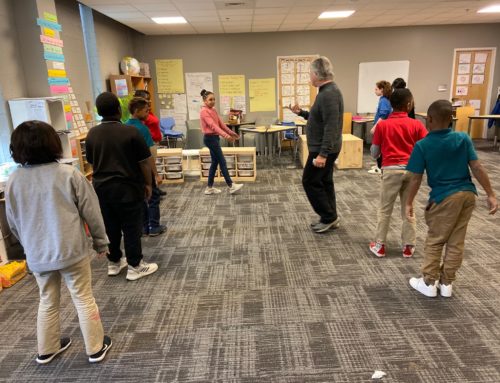Curiosity is a driving force at AFIA; we encourage students to observe their surroundings, ask questions, and find answers. You can see this process in action in each of our classrooms, even in our youngest learners, Pre-K and Kindergarten. During recess several of our Pre-K and Kindergarten students noticed bugs on the playground and began to ask Mrs. Clark questions about them. After learning the small bugs were caterpillars, students realized that caterpillars become butterflies, and they continued to investigate during their recess time. Their curiosity outside transferred indoors during library time when students began to select books about caterpillars and butterflies. The students’ continued interest in caterpillars and butterflies led to a project to deepen their understanding.
Students began this project by building a web of their existing knowledge of caterpillars and butterflies. Webs (Helm, 2016) are graphic representations that help students:
- Understand the relationship between things,
- Extend thinking, and
- See a visual representation of their thinking.
The Caterpillar Project included several methods for students to learn and demonstrate their learning because we know that people learn through multiple modalities. After observing caterpillars outside, students explored texts about caterpillars and butterflies, created a puppet theater to retell stories, worked in groups to build dioramas of butterfly habitats, created observational drawings of their in-room habitats, and recorded their observations and ideas in writing.

Students worked together to build a theater to share stories.

Students shared their knowledge with peers through creative storytelling.

Our live caterpillar and butterfly habitat allowed students to observe the life cycle and write or draw their observations.

In our Pre-K/K classroom we have varied levels of writing development; during this project we saw students’ writing begin to blossom, across every level.

Social development is an important part of the education process, to support that development students had the ability to work in groups to create a diorama of a butterfly habitat.

Group work helps students practice problem solving, communication, sharing, and kindness with others.
As the project concluded, students decided to write a song called “The Life Cycle of a Butterfly.” Students listened to various instrumentals to choose a melody, worked together to develop lyrics, brainstormed movements to match the key words within the song, and were able to perform the song and dance in front of their families at our Fall Celebration of Learning. Students were also able to share their dioramas, writing, and other work with their families following the performance.

AFIA Pre-K/K students share their butterfly learnings through song and movement.


Leave A Comment
You must be logged in to post a comment.